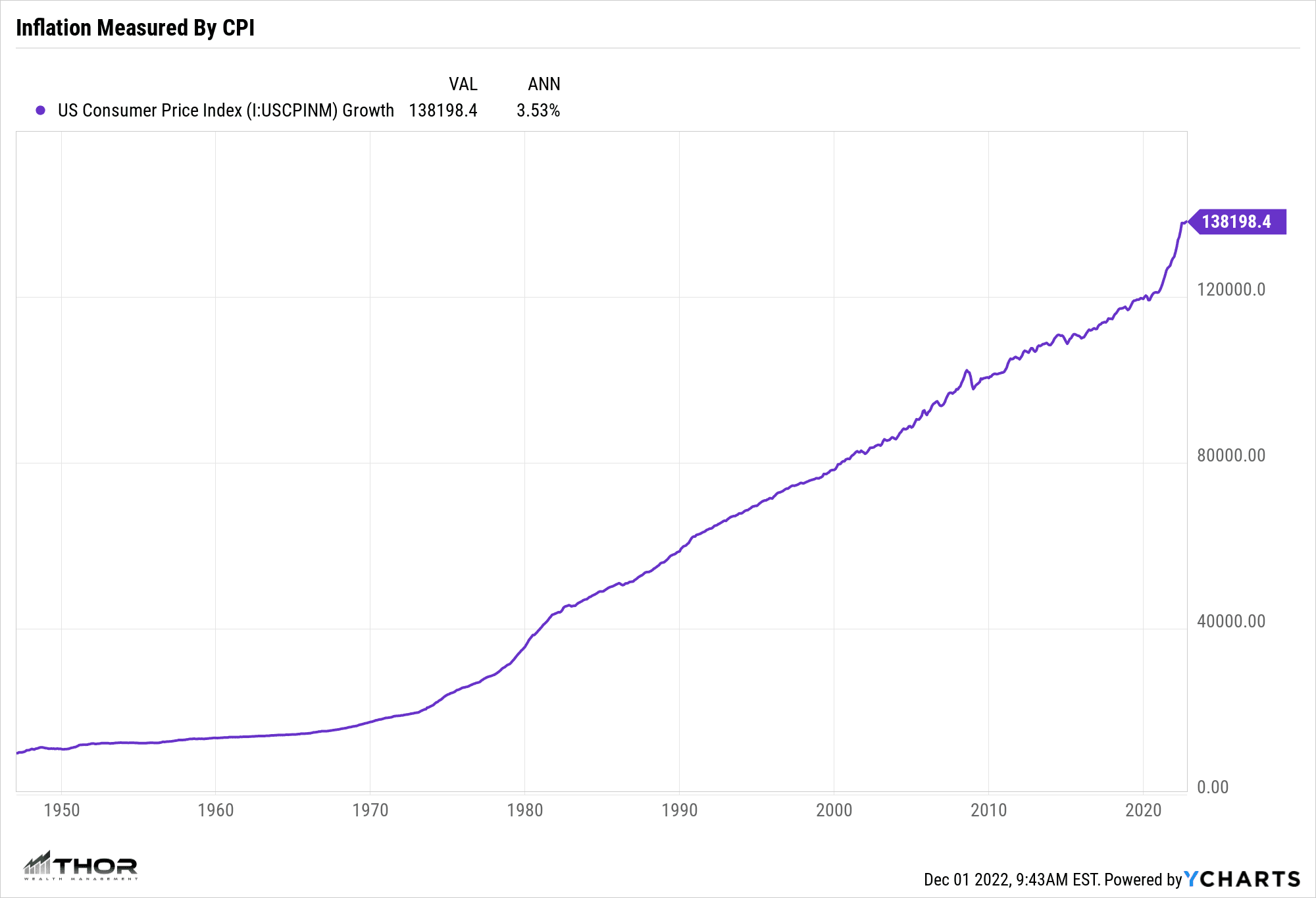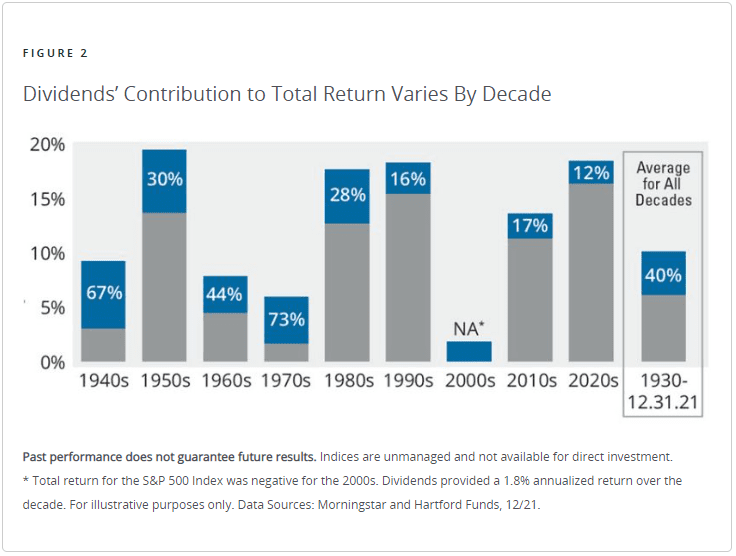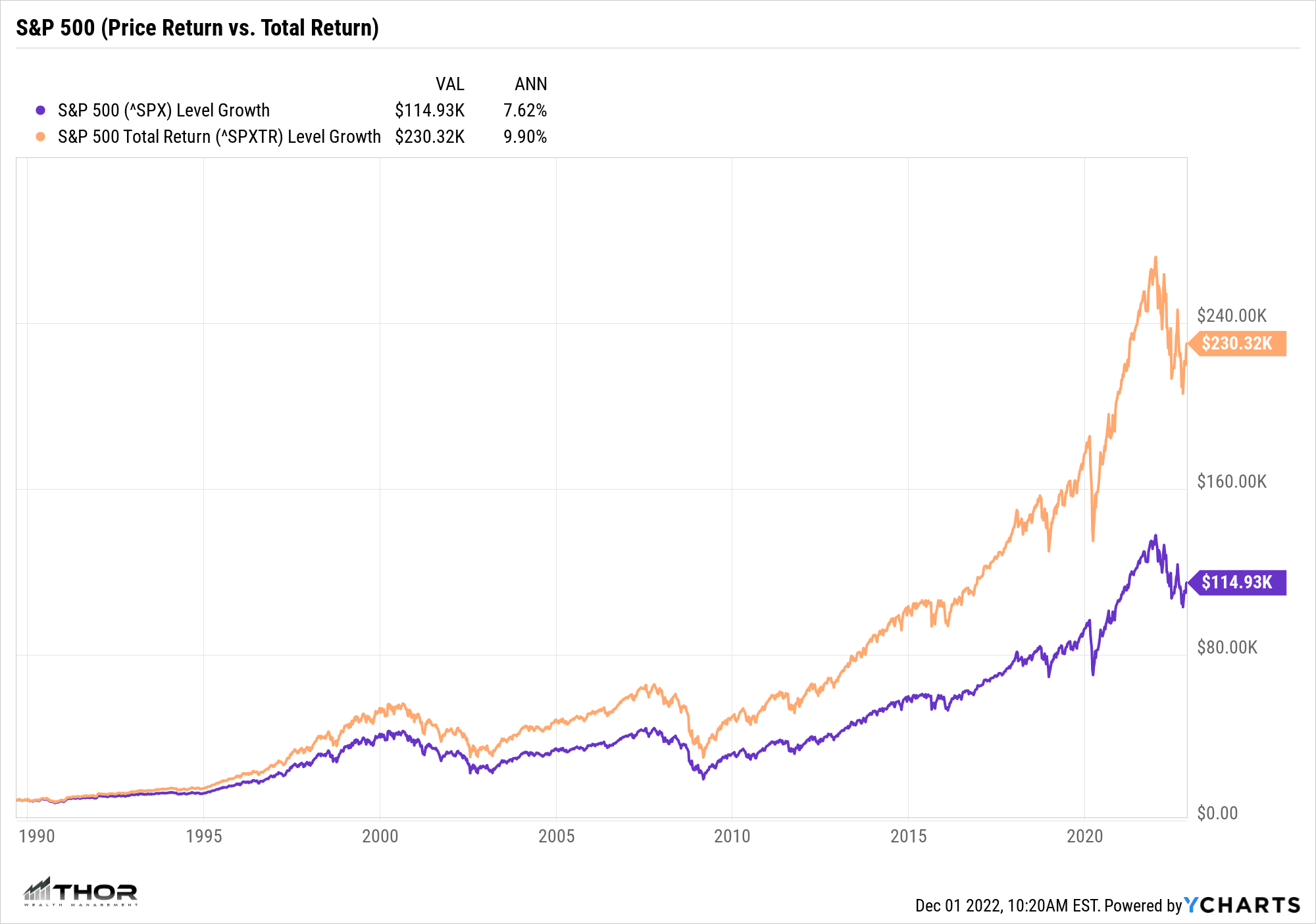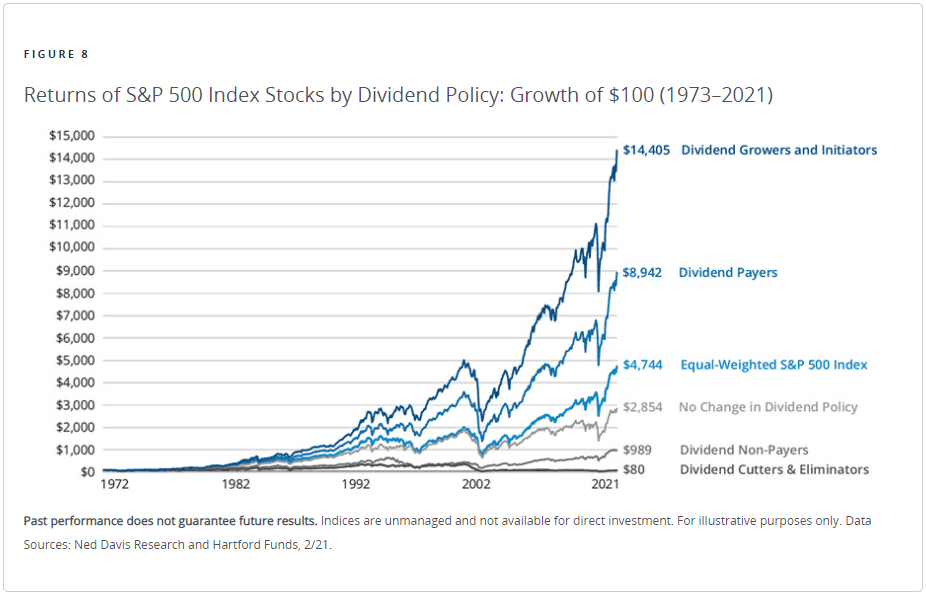Common Investor Mistakes – Part 3: Put Your Money to Work!
Blog post
12/01/22In Part 1 of this series, we discussed Emotional Trading and the behavior and cognitive biases displayed when making this mistake. In Part 2, we expanded on that discussion, going through Risk Tolerance, which is the foundation of portfolio construction and can help you avoid making emotional trading decisions. In Part 3 of this series, we continue to expand on both and talk specifically about the mistakes of holding too much cash and of not reinvesting dividends.
Mistake #1: Holding Too Much Cash
Many people assume investing is riskier than holding cash. While this might be true in the short run, this typically results in holding too much cash in the long run. This mistake can show up in a multitude of ways. As discussed in Part 1 – Emotional Trading, we discussed a scenario where investors attempt to time the market by selling and going to cash. If you have not read it yet- spoiler alert- you should not try to time the market. Another scenario where we see investors holding too much cash was discussed in Part 2 – Risk Tolerance. This involved an investor not setting a strategic asset allocation, or they set the allocation but did not stick with it over time. Regardless of the reason, in most cases, holding too much cash is a problem.
First, I want to emphasize that everyone should have some amount of cash saved in an emergency savings account. The correct amount is based on your personal situation. Too much cash is a problem because it almost guarantees you will lose money over time. The guaranteed loss will not appear on your account statement though, as the nominal value of your cash balance will not change. The loss occurs over time, as you are losing value in real purchasing power, which is the adjusted value of cash after accounting for inflation.
Since 1947, the average annualized loss from holding cash has been a negative 3.53%. View the Consumer Price Index (CPI) chart below to see how impactful that loss can be. CPI is a common metric the government calculates quarterly to quantify inflation. Assuming you started with $10,000 in 1947, you would need $138,762.60 today to have the equivalent amount of purchasing power. In other words, if you held $10,000 in cash since 1947, your purchasing power in today’s dollars would be equivalent to just $675. This equates to a loss of purchasing power of approximately 93%. Not exactly a “good investment.”

Mistake #2: Not Reinvesting Dividends
With technology upgrades and advancements to custodian platforms, reinvesting a company’s dividends is as easy as clicking a button online. Custodians have completely automated the ability to buy back full and partial shares with the dividends paid out by a company. Despite this, some investors still decide not to reinvest their dividends and instead opt to have them paid out in cash. That potentially is a big mistake when investing in individual stocks, but it certainly is if you are investing in an index fund.
For starters, from 1926 to 2016, the average compounded annual nominal return for the market was 9.99%. Of that return, almost half (4.2%) was from dividends. If you want to take a closer look, this is a great piece on returns and forecasting. Below is a bar graph from a Hartford article which breaks down the dividends’ contribution (in blue) to total return (in grey) by decade. You will notice that it does fluctuate from decade to decade, but on average, it has accounted for 40% of the total return for the market since 1930.

Source: https://www.hartfordfunds.com/insights/market-perspectives/equity/the-power-of-dividends.html
Looking at a more recent time period, the graph below shows two scenarios where an individual invested $10,000 in the S&P 500 in 1990. The purple line shows you the price return (no dividends reinvested) while the orange line shows you the total return (dividends reinvested). The difference between the two cases is significant, with the scenario that did not reinvest dividends having an annualized return of 7.62% ($112.1k) compared to the scenario with reinvested dividends at 9.87% ($221.9k).

One Final Note on Dividends
Not all dividend paying stocks are created equal. There is much evidence (see charts below) that over the long-run, dividend investing in general can achieve superior returns relative to simply investing in the index.

Source: https://www.hartfordfunds.com/insights/market-perspectives/equity/the-power-of-dividends.html
The key bucket to focus on in both of those graphs is the “Dividend Cutters & Eliminators.” You clearly want to avoid the stocks in that bucket. A lot of investors will simply search for high yielding dividend stocks which might be setting them up for failure. Typically, a high yielding stock has a high yield for a reason (high debt, dying industry, etc.). Some of these high yielding dividend companies end up finding their way into that “Dividend Cutters & Eliminators” bucket. To avoid companies that end up in that bucket, in addition to looking for high dividend paying stocks, it is beneficial for an investor to analyze a company’s payout ratio. A payout ratio is the percentage of earnings paid out in dividends. The best kind of dividend paying stocks are high quality businesses that can continue to increase their dividend year-in and year-out (Dividend Aristocrats). Those companies are represented by the “Dividend Growers & Initiators” in the charts above.
Bottom Line
It is inevitable that mistakes will be made by every investor. You should make every effort to eliminate or at least minimize the mistakes you can control. The two discussed today might sound simple and straightforward, but they are controllable and can make an impactful difference on your portfolio over time.
If you like what you read today, you can read more by clicking here to go directly to our Blogs and Market Updates section on our website. If you scroll to the bottom, you can enter your email to have our blogs and market updates sent directly to you.
You can also follow us on social media:
Click here and subscribe to our YouTube channel for our market updates.
Click here to follow us on LinkedIn
Click here to follow us on Facebook